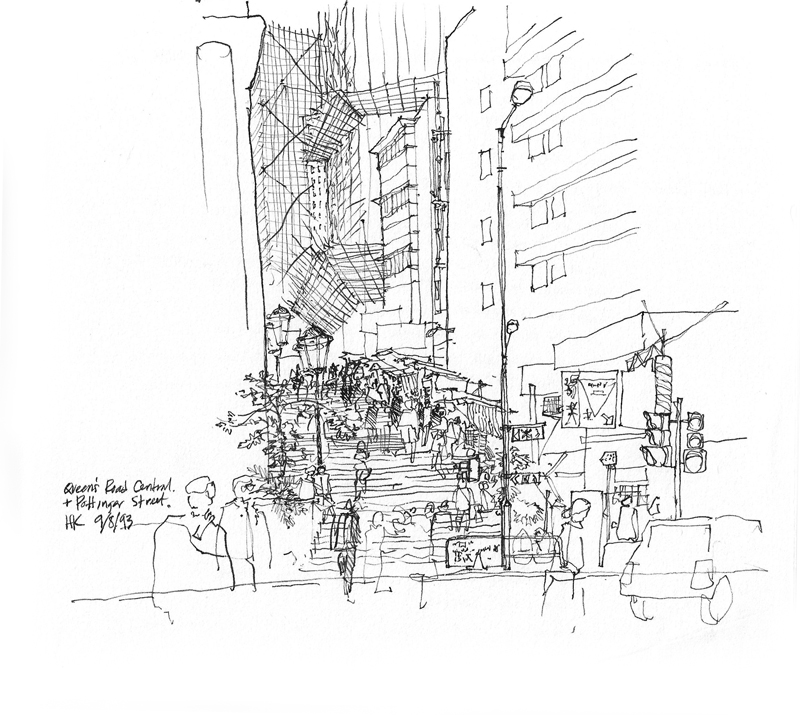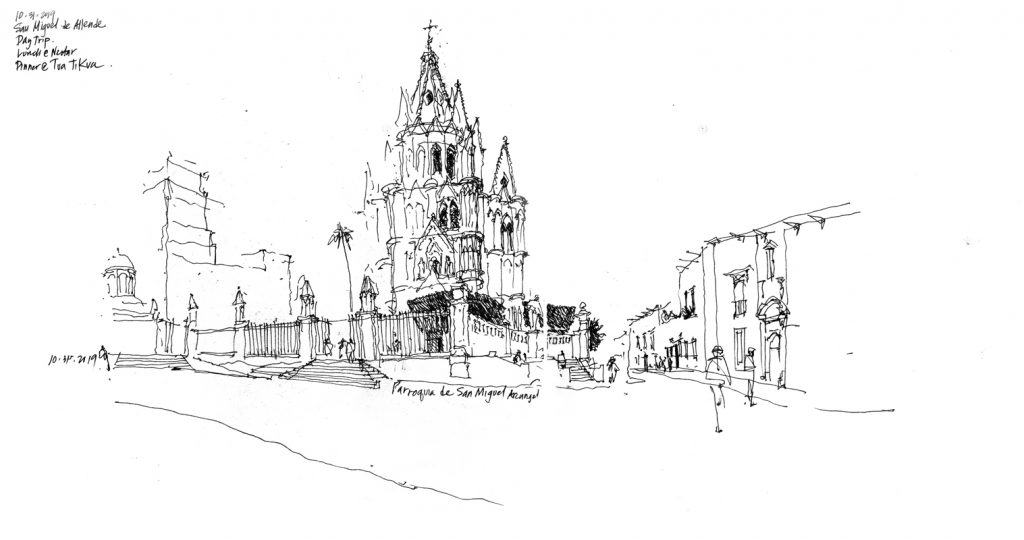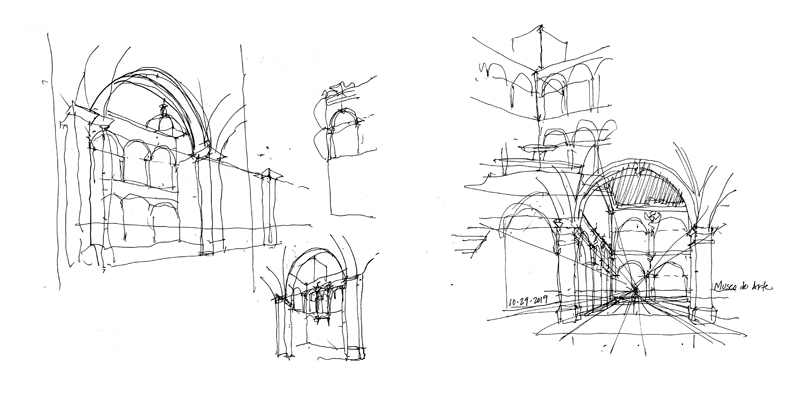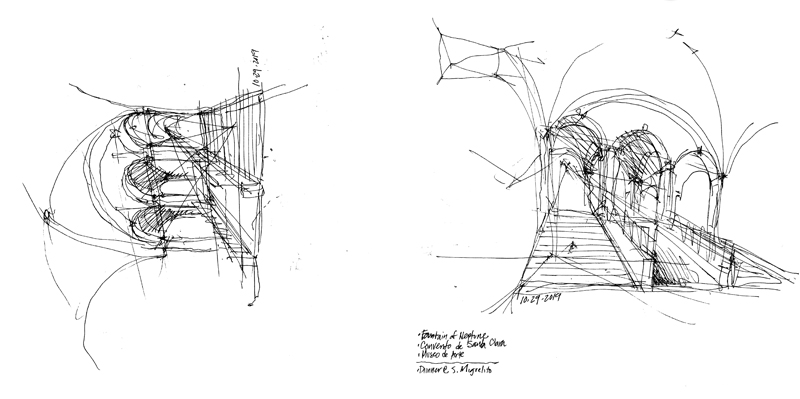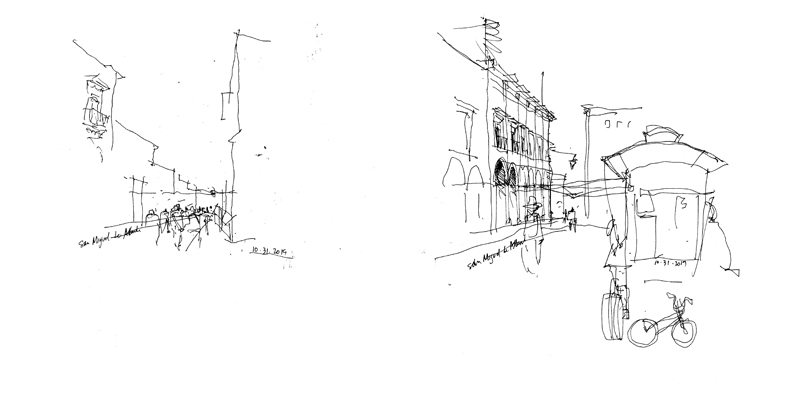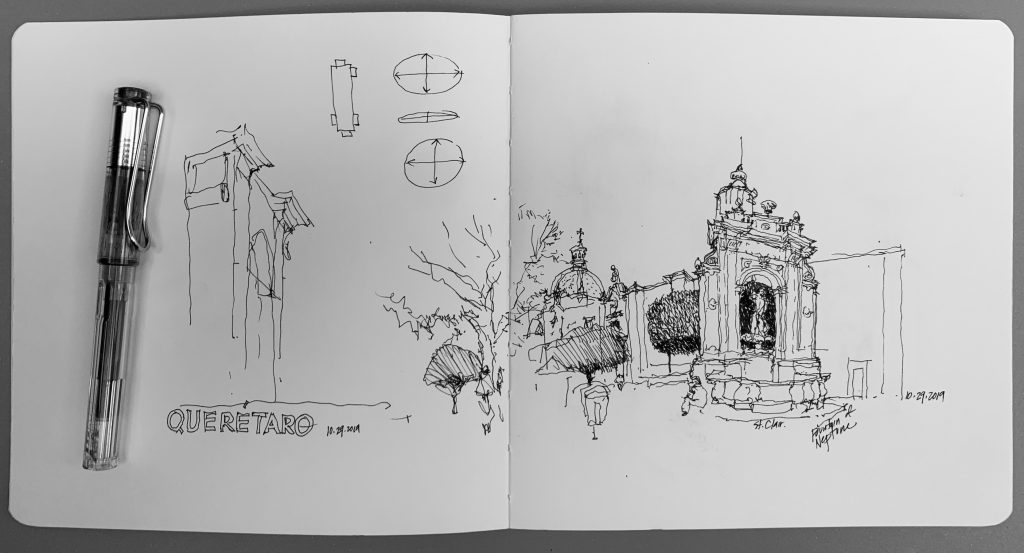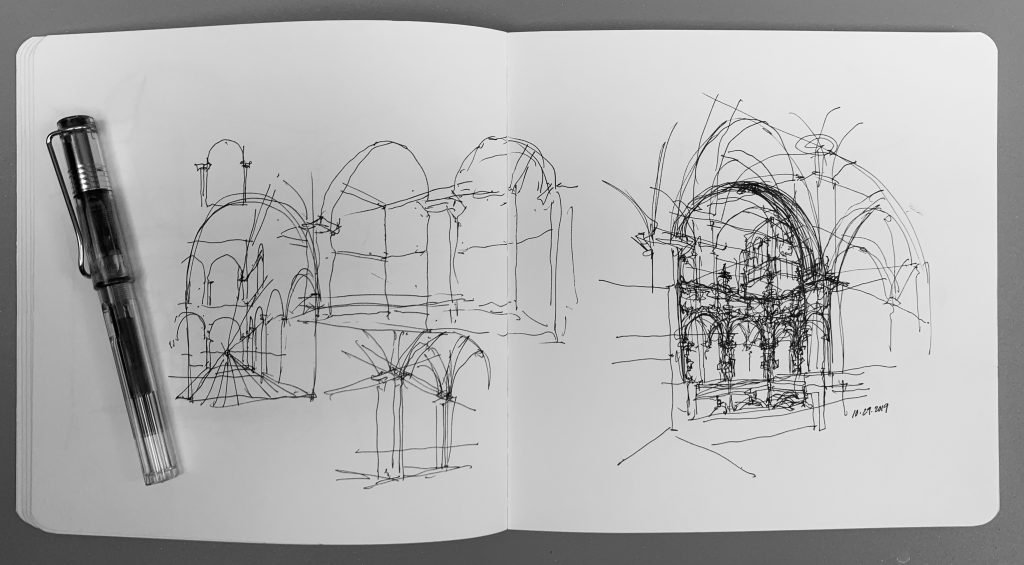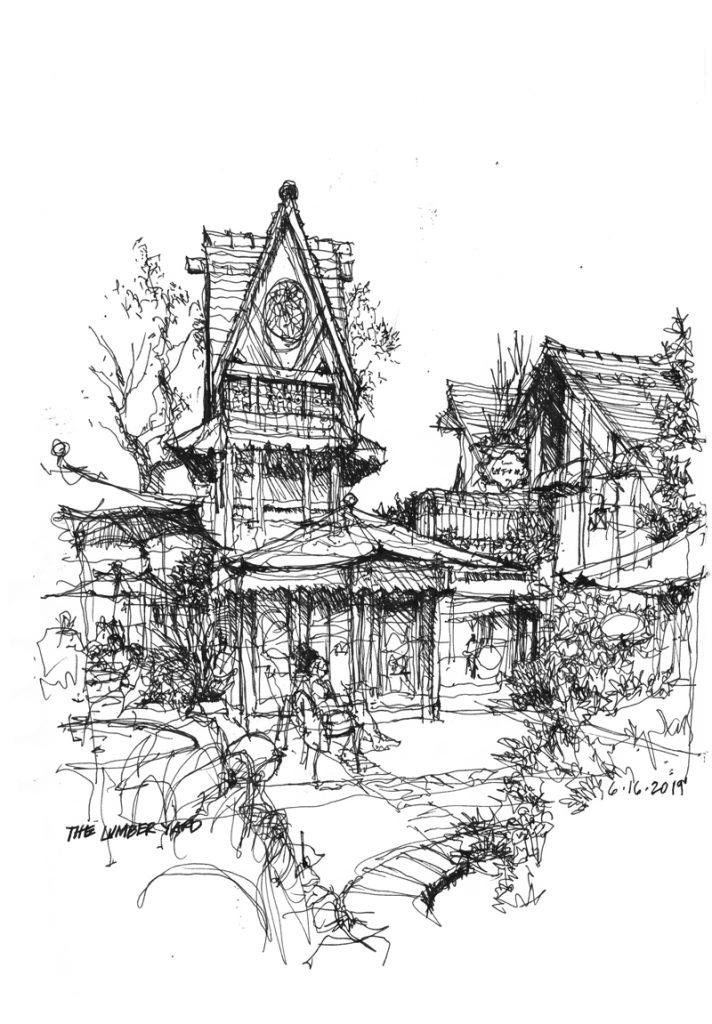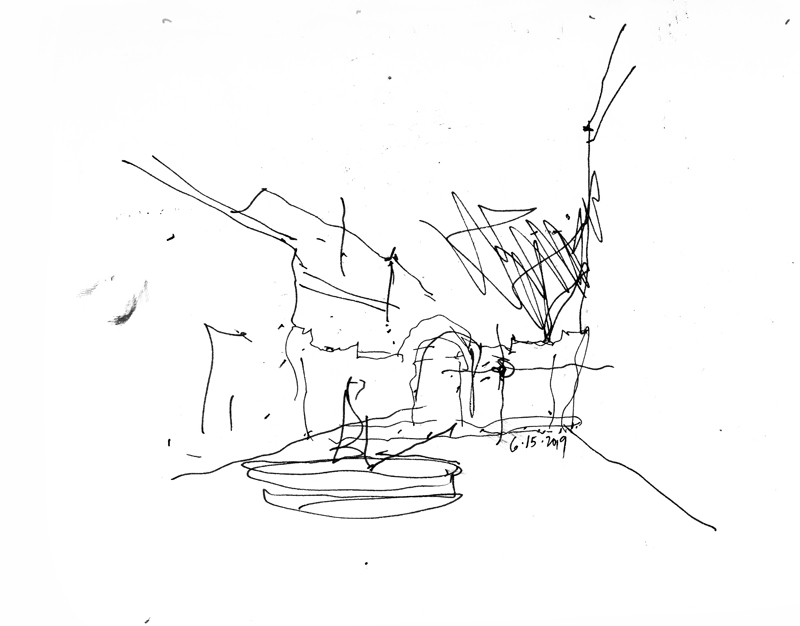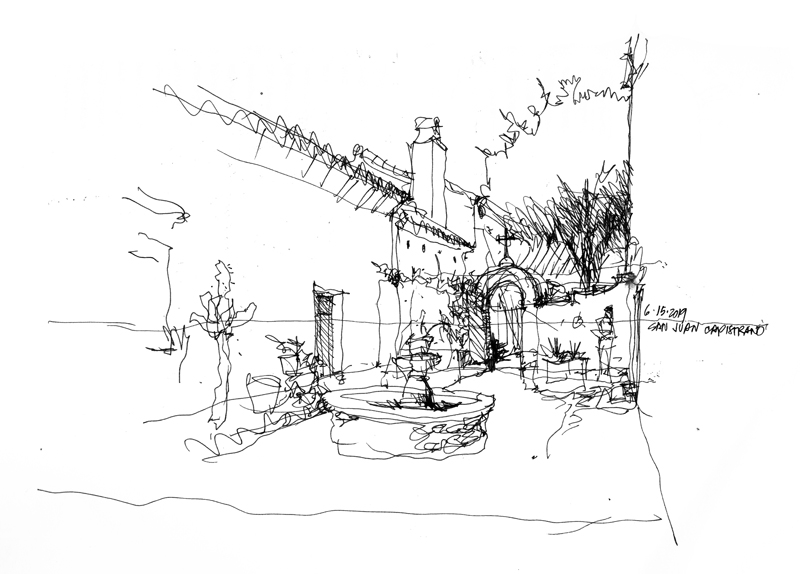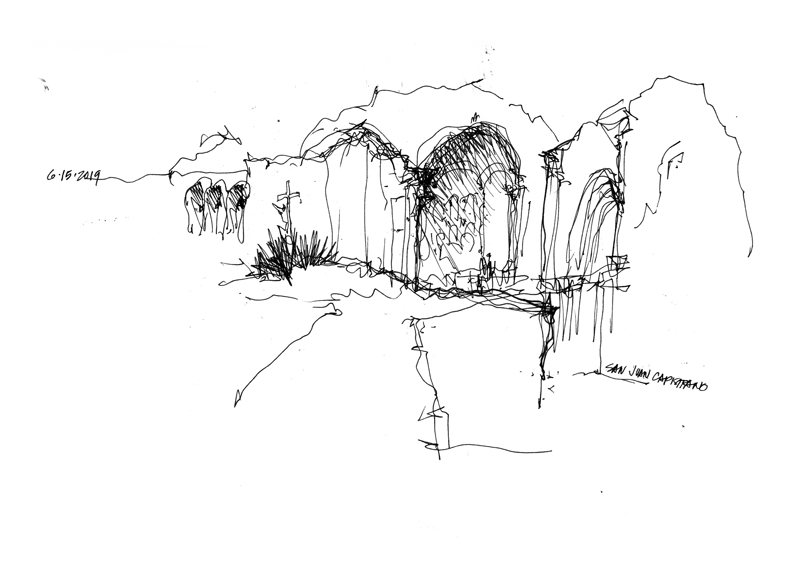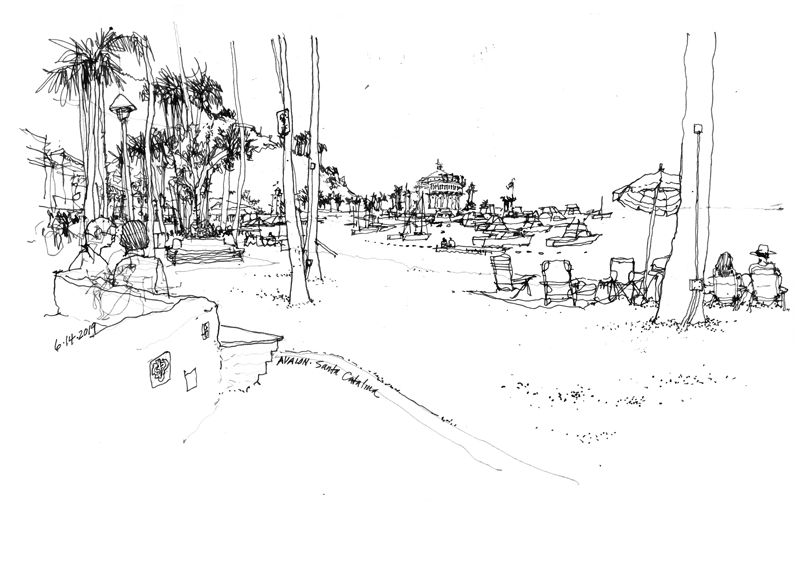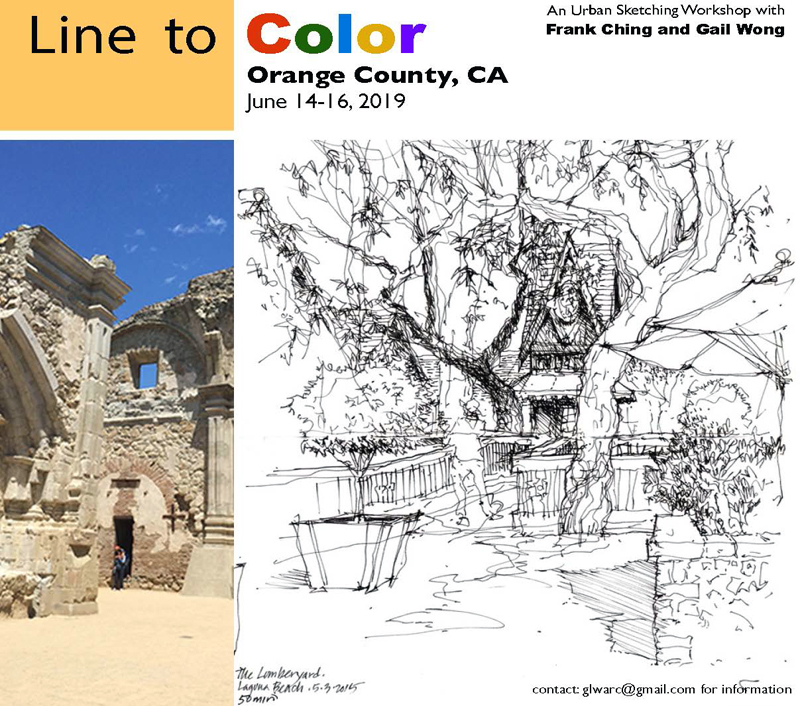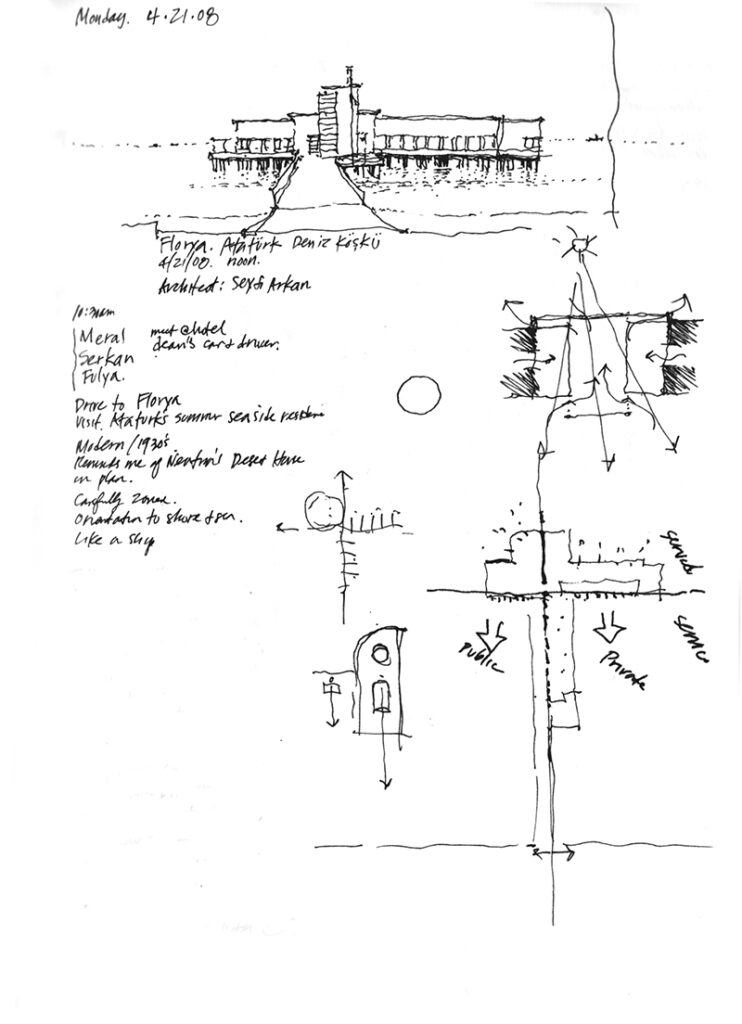
In 2008, Yapı-Endüstri Merkezi (YEM) gave me the opportunity to offer a drawing workshop for Turkish students in Istanbul. After the two-day event, Dr. Meral Erdoǧan and Dr. Fulya Ozsel Akipek of Yildiz Technical University invited me to tour the Florya Atatürk Marine Mansion, summer residence of Mustafa Kemal Atatürk, founding father of the Republic of Turkey. Located along the shore of the Sea of Marmara, the Bauhaus style structure was designed by architect Seyfi Arkan and built in 1935. These quick sketches reflect a study of the design’s zoning and orientation to both shore and sea.

